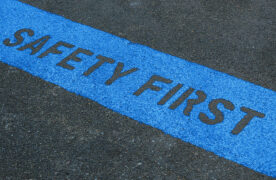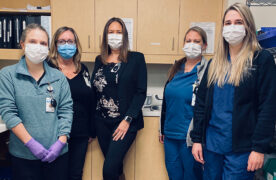To mark Canadian Patient Safety Week (CPSW), we are taking a look at the importance of pharmacies establishing a culture of medication safety—with the goal of enhancing patient safety by identifying medication errors and making continuous quality improvements that prevent similar occurrences in the future.
Pharmacy professionals will often hear the term “culture of medication safety” and wonder exactly what it means—after all, culture can be a challenging concept to define. In pharmacies, a culture of medication safety refers not just to the policies, practices and processes that are in place to keep patients safe, but also to the attitudes of pharmacy staff and leadership about how errors are identified, managed and, ultimately, avoided in the future.
A culture of medication safety requires both system checks and balances, as well as an environment that encourages pharmacy professionals to collaborate as a team to continuously improve the way they work, and to feel safe reporting errors without fear of blame or reprisal. The goal, of course, is to enhance patient safety through the identification of errors and the establishment of processes to prevent similar occurrences in the future.
Pharmacies with strong medication safety cultures have some common traits, and the following table illustrates the difference between those that have established cultures of medication safety and those that do not.
How to recognize a pharmacy safety culture
| Pharmacies yet to establish a Safety Culture | Pharmacies WITH an Established (or Positive) Safety Culture |
|---|---|
| Safety improvement suggestions or comments from staff are often ignored or undervalued. | Safety improvement suggestions or comments are encouraged, recorded and used to drive improvements to patient safety. |
| Medication incidents and near misses are analyzed to punish staff for errors. | Pharmacy staff routinely collaborate on analyzing medication incidents and near misses to extract learning points and develop and implement action plans with the goal of preventing future reoccurrences. |
| Staff cover up their errors, or those of their colleagues, fearing blame or reprisals. | Staff feel safe recording and discussing medication incidents that involved themselves or their colleagues, without fear of blame or reprisals. |
| Staff members take constructive feedback personally. | Staff members value constructive feedback, and use it to improve their own practice. |
| Continuous quality improvement processes are viewed as a waste of time or resources. | Continuous quality improvement is part of an embedded process that is part of normal, everyday practice. |
| Designated Managers (DMs) or Director Liaisons (DLs) do not “walk the talk” or model appropriate behaviour and practices. | Pharmacy leaders, including DMs, DLs and pharmacy owners, model appropriate behaviour and practices, and hold their staff accountable to the same high standards. |
| Support is not provided to pharmacy staff who may have been involved in serious medication safety errors, and who may feel guilty or experience a decrease in self-confidence. | The health and well-being of staff is valued and promoted, and supports such as counselling services are made available. |
| Pharmacy staff function individually, rather than as a team. | Teamwork is central to the pharmacy’s practice. |
It is important to understand that creating a culture of medication safety is a journey that takes time and collaboration between every member of the pharmacy team. It serves as the foundation for continuous quality improvement activities, and will help your pharmacy provide safer patient care.
Additional Resources:
- Pharmacy Connection, Spring 2019: Aftermath of a Medication Incident – Caring for the Patient, the Family, but also the Healthcare Professional
- Pharmacy Connection, Summer 2019: Disclosure of Medication Incidents: A Suggested Framework













